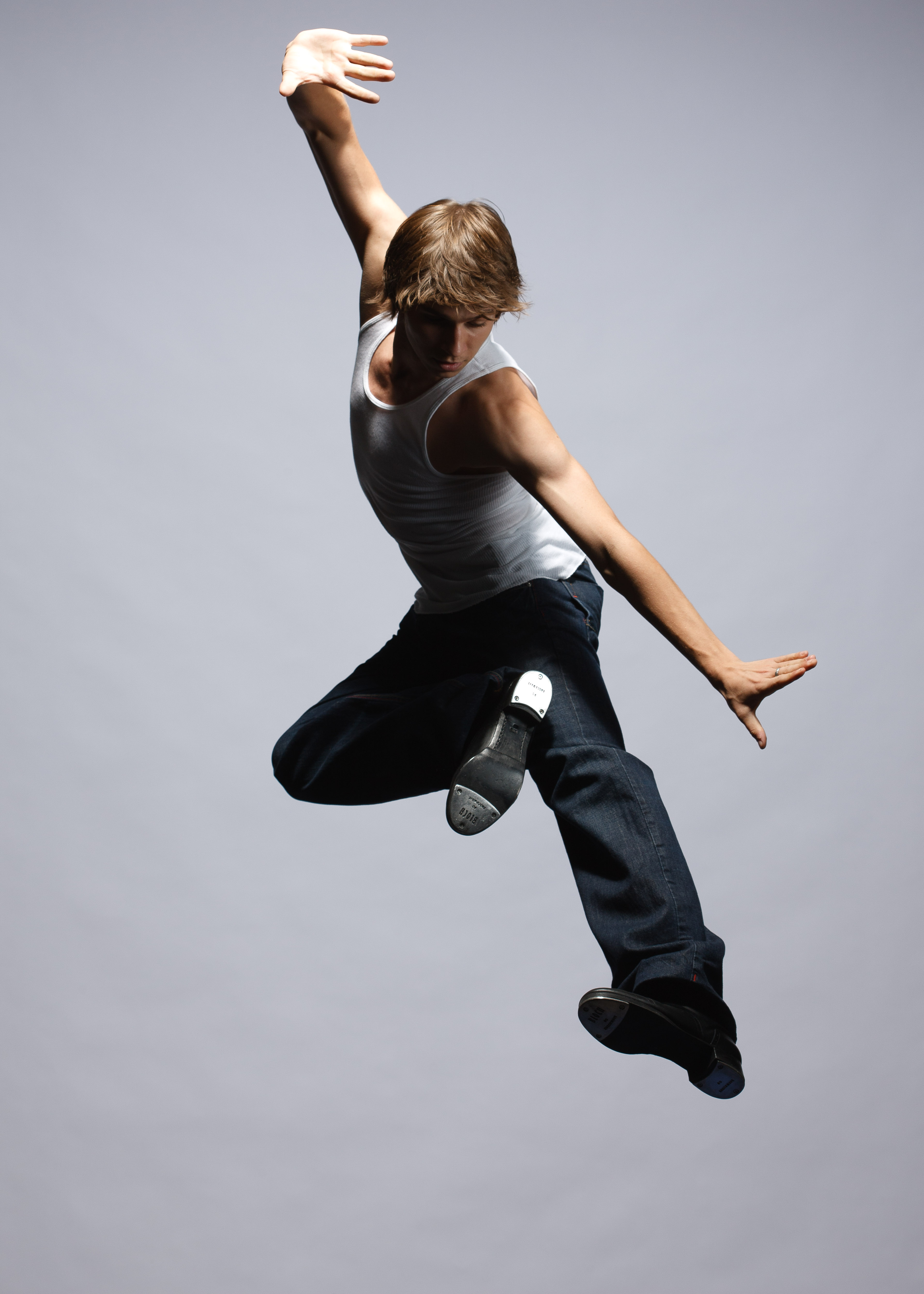
Wednesday’s curtain speech for JUBA! was a tag team of Peter Taub and Lane Alexander (of the Museum of Contemporary Art (MCA) and Chicago Human Rhythm Project (CHRP), respectfully) recognizing the importance of tap dance in Chicago, and the long-time collaborative effort of the two organizations to elevate tap to a more sophisticated realm. JUBA! is a three day festival-style performance hosted by the MCA as part of a massive festival of rhythmic-based dance forms. When Lane Alexander began what is now a month-long festival of workshops, classes and performances featuring artists from around the world 24 years ago, tap was perhaps an underrepresented genre, but Wednesday’s JUBA! drove home the point that indeed there is a whole world of incredible artists sharing tap as a medium.
It’s hard not to buy it, hook, line, and sinker. The second half of the program was an “It’s a Small World After All” of tap dance, with dazzling performances from Spain’s Guillem Alonso, Switzerland’s Daniel Borak, French Victor Cuno, and Charles Renato from Brazil. This came after nearly 90 minutes of home grown artists, making for an exceptionally long evening on a school night. The problem with JUBA! wasn’t the performers; the message of accepting tap amongst the other elite forms of concert dance simply didn’t sync with CHRP’s dance recital presentation.
Sloppy tech resulted in musicians and audience members fumbling around in the dark looking for their seats (while an usher sat contentedly in my empty plus one). Kids from the bring-down-the-house opener sat visibly in the wings fixing their hair while the world’s best tappers tore up the stage, and Lane Alexander inserted PBS pledge drive-style commentary willy-nilly, seriously downgrading the overall experience. Admittedly, I was in a bad mood, having foregone dinner that evening, but after such an emphatic plea to elevate tap, with the benediction of the reputably refined MCA, I expected more.
But damn, those people can tap.
I got the feeling that tap could survive all on its own, without trying to be like other forms of concert dance. Tap is an intrinsic part of American dance history, infectious around the world, as evidenced by this festival, and I’m not sure it’s necessary to validate tap in this way. Had the same exact show been performed in a city park, or on a sidewalk downtown on a piece of warped plywood, I’m fairly confident it would have been equally amazing. The virtue of tap is not in how it’s dressed, but in its soul.
